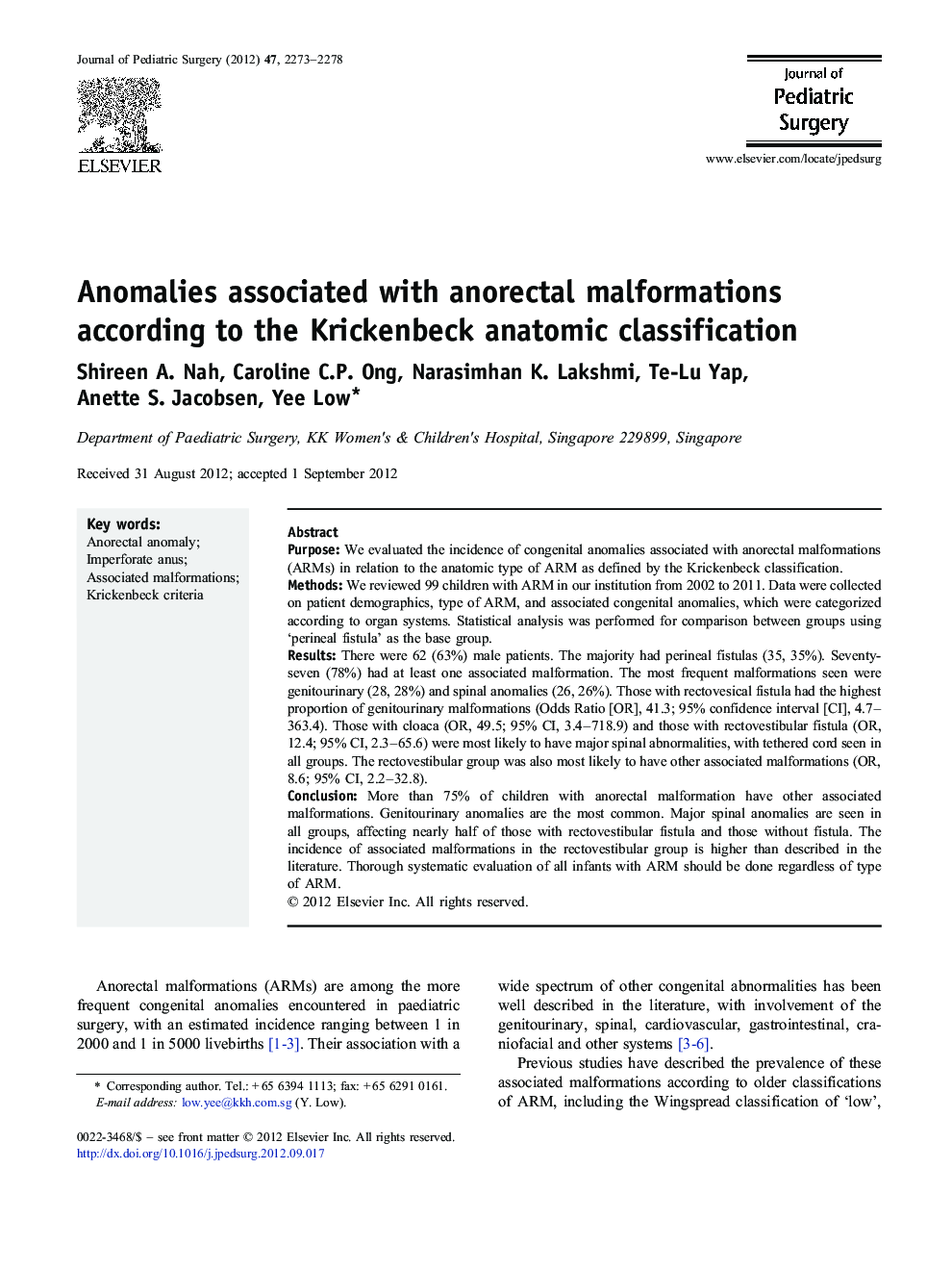| Article ID | Journal | Published Year | Pages | File Type |
|---|---|---|---|---|
| 4156481 | Journal of Pediatric Surgery | 2012 | 6 Pages |
PurposeWe evaluated the incidence of congenital anomalies associated with anorectal malformations (ARMs) in relation to the anatomic type of ARM as defined by the Krickenbeck classification.MethodsWe reviewed 99 children with ARM in our institution from 2002 to 2011. Data were collected on patient demographics, type of ARM, and associated congenital anomalies, which were categorized according to organ systems. Statistical analysis was performed for comparison between groups using ‘perineal fistula’ as the base group.ResultsThere were 62 (63%) male patients. The majority had perineal fistulas (35, 35%). Seventy-seven (78%) had at least one associated malformation. The most frequent malformations seen were genitourinary (28, 28%) and spinal anomalies (26, 26%). Those with rectovesical fistula had the highest proportion of genitourinary malformations (Odds Ratio [OR], 41.3; 95% confidence interval [CI], 4.7–363.4). Those with cloaca (OR, 49.5; 95% CI, 3.4–718.9) and those with rectovestibular fistula (OR, 12.4; 95% CI, 2.3–65.6) were most likely to have major spinal abnormalities, with tethered cord seen in all groups. The rectovestibular group was also most likely to have other associated malformations (OR, 8.6; 95% CI, 2.2–32.8).ConclusionMore than 75% of children with anorectal malformation have other associated malformations. Genitourinary anomalies are the most common. Major spinal anomalies are seen in all groups, affecting nearly half of those with rectovestibular fistula and those without fistula. The incidence of associated malformations in the rectovestibular group is higher than described in the literature. Thorough systematic evaluation of all infants with ARM should be done regardless of type of ARM.
